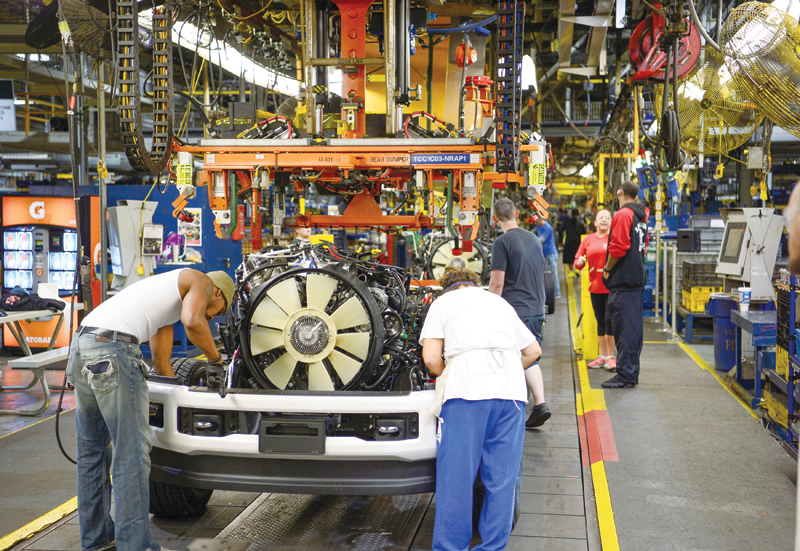

WASHINGTON: US industrial production recorded its biggest increase in six months in October as the drag from hurricane-related disruptions unwound, but the underlying growth trend in output at the nation’s factories, mines and utility plants remained moderate.
Other data on Thursday showed an unexpected rise in new filings for unemployment benefits last week in part because of the processing of a backlog of applications from Puerto Rico. The reports are consistent with an economy growing at a steady clip and tightening labour market conditions, likely keeping the Federal Reserve on course to raise interest rates next month.
“With encouraging fundamentals in place, we expect the slow but steady improvement in the US factory sector to continue in the coming months,” said Tim Quinlan, a senior economist at Wells Fargo Securities in Charlotte, North Carolina.
The Fed said industrial production accelerated 0.9 per cent last month with output at factories surging 1.3 per cent as operations returned to normalcy after being disrupted by Hurricanes Harvey and Irma, which made landfall in late August and early September.
The increase in industrial production was the largest since April and followed a 0.4 per cent gain in September. Production was also buoyed by a 2.0 per cent jump in output at utility plants.
But Hurricane Nate, which struck the Gulf Coast in early October, resulted in a decline in oil and gas drilling and extraction. That led to a 1.3 per cent drop in mining output last month. The Fed said excluding the impact of the hurricanes, industrial production rose 0.3 per cent in October, with manufacturing output advancing 0.2 per cent.
Manufacturing, which accounts for about 12 per cent of US economic activity, is being supported by a weakening dollar, firming global economy and inventory accumulation by businesses.
With the surge in output last month, manufacturing capacity use rose 0.9 percentage point to 76.4 per cent, the highest level since May 2008.
“The Fed estimates that manufacturing capacity is only growing by 0.7 per cent per year, which points to the need to expand capacity at a faster rate should manufacturing output continue to grow at a solid pace,” said John Ryding, chief economist at RDQ Economics in New York.
The outlook for manufacturing is upbeat, with a measure of factory activity hovering near a 13-1/2-year high.
Although a separate report by the Philadelphia Fed on Thursday showed its index of factory activity in the mid-Atlantic region fell to a reading of 22.7 this month from 27.9 in October, manufacturers reported robust demand for their products, rising backlogs and declining inventories.
Factories, however, reported a slowdown in hiring as well as a shorter average workweek this month. A survey on Wednesday from the New York Fed mirrored the findings of the Philadelphia Fed survey.
The dollar was little changed against a basket of currencies, while prices for US Treasuries fell. Stocks on Wall Street were trading higher, boosted by strong results from Wal-Mart. The world’s largest retailer said sales at US stores open at least a year rose 2.7 per cent in the third quarter, excluding fuel price fluctuations. — Reuters
Oman Observer is now on the WhatsApp channel. Click here



